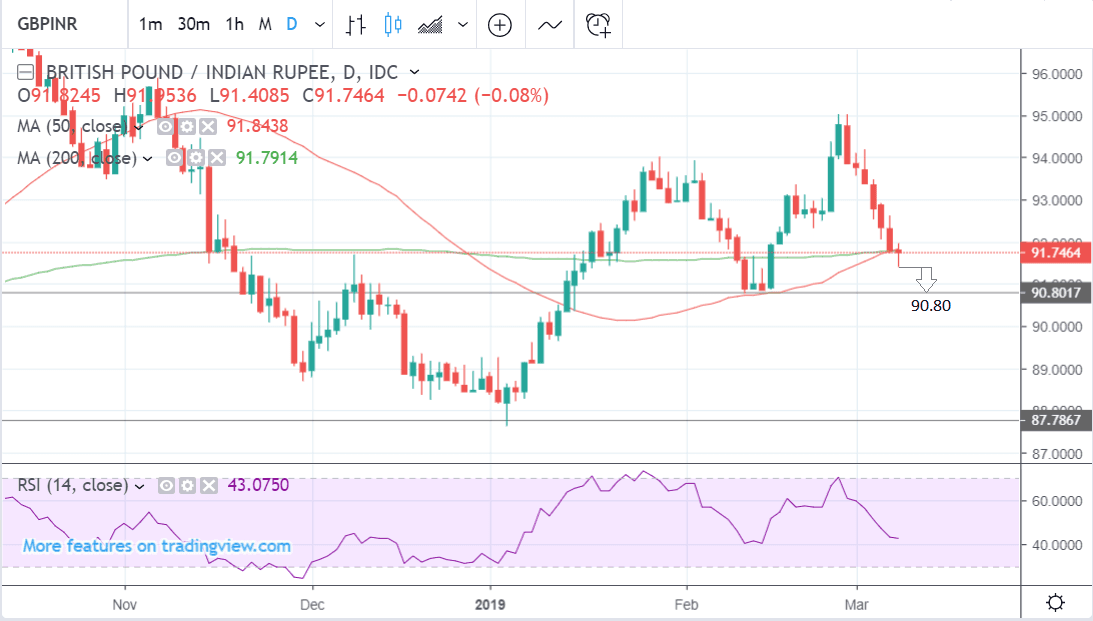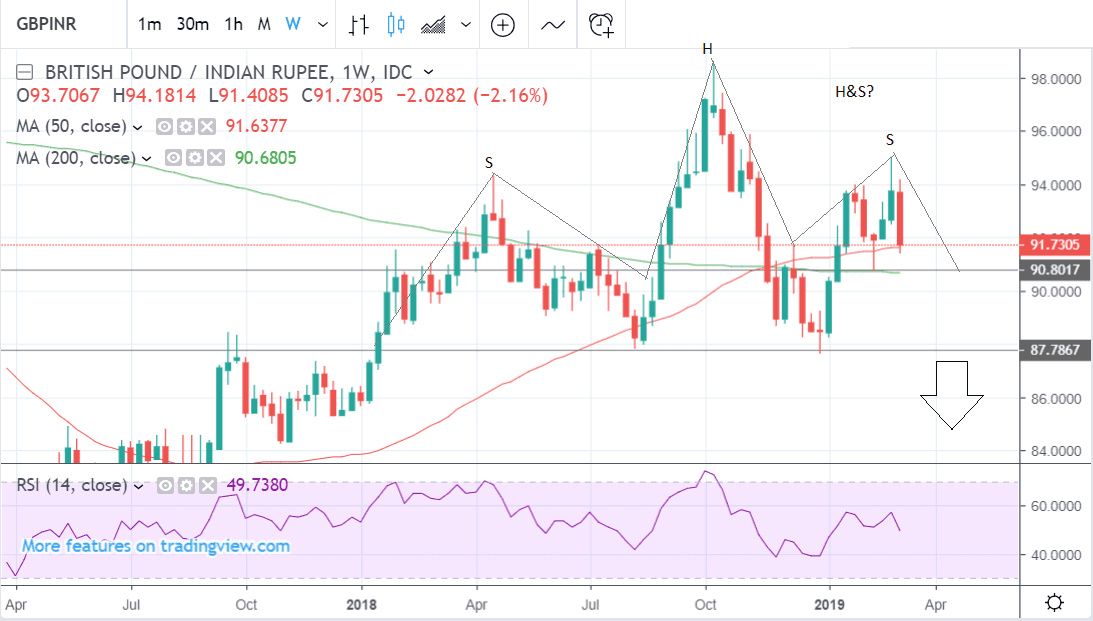Indian Rupee Rampant on Carry; GBP/INR Flashing Warning Signs

Image © kasto, Adobe Stock
- GBP/INR enters short-term downtrend
- Carry flows boost INR bets
- Long-term chart very bearish for GBP/INR
The Indian Rupee has made strong gains across the board and has completed 6 days of consecutive advances in a row with 1 GBP now buying 91.47 INR whereas on February 28 a pound could buy as many as 95 rupees.
It’s the same story against the U.S. Dollar, with USD/INR having found its way onto commentators’ radar screens recently after a fall of a similar magnitude with a dollar now buying 70.15 rupees against the 71.82 2019 high seen on February 05.
“INR is supported by expectations of solid foreign investor flows,” says Peter Stoneham, an analyst on the Thomson Reuters currency desk, “Very bullish for INR as it continues to ignore a big risk-off Friday. Technicals also putting INR in a good light: risk of change here. Global growth concerns, spiked by a dovish ECB, laying waste to stocks.”
The main driving force appears to be foreign capital inflows. Indian government bonds are seen as a relatively safe bet with the added advantage of a high emerging market (EM) return. Base interest rates in India remain relatively high at 6.25% due to constantly rising inflation and this pushes up yields. For western funds, this has proven an attractive proposition when compared with the moribund rates on offer elsewhere.
There is often high incentive for investors to borrow in cheap currencies and park the funds in high-yielding currencies. The problem with deploying such a 'carry' strategy into Indian assets however has been strict regulatory controls.
A big change came in 2018 when the Reserve Bank of India relaxed rules preventing foreign investors from engaging in the Indian bond market. Since then the ‘carry trade’, as it is known, has become a more prominent function of the Rupee’s gyrations. The recent run higher has been put down to just that.
Typically the vehicle for the carry is government bonds. The 10-year Indian government bond has an interest rate of 7.53%, versus the circa 2.64% on a commensurable U.S. loan. This provides a substantial circa 389 basis points profit. In the case of the Euro, a 10-year loan rate, could be negative, at say, – 0.62%. The difference, there, is an even bigger 8.15%!
“Current FX moves a story of carry trades, low volatility, resilient risk appetite. INR is high yield, under-owned with big scope vs. other EM bets,” says Jeremy Boulton, an analyst at Reuters.
An added bonus for carry traders is that the increased demand created by the global push and pull for carry, can drive up the value of the carry currency – in this case the Rupee. This means that when investors close the trade they can also sometimes benefit from the added profit from the exchange rate on the return leg.
Of course, it can also go the other way and when the currency moves against an investor the entire benefit of the carry trade can be wiped out.
Pound-Rupee: Warning Signs
From a technical perspective, the GBP/INR exchange rate may have reached something of a temporary floor after touching down on both the 200 and 50-day moving averages (MA), and whilst it doesn’t look it is going to start going up by much, any time soon, it has stalled and may bounce due to some counter-trend bullish pressure.
A break below the 91.35 level, however, would provide sufficient confirmation for more downside, to a potential short-term target at 90.80 where some key lows are situated.
More frightening for GBP bulls, perhaps, is the sight of the huge, bearish, head and shoulders (H&S) pattern potentially forming on the weekly chart (above). This suggests a major long-term top may be forming which could indicate significant future downside. This is especially the case if the neckline for the pattern is broken at 87.75. Such a break could lead to a move down to as low as 80.00.
Time to move your money? Get 3-5% more currency than your bank would offer by using the services of foreign exchange specialists at RationalFX. A specialist broker can deliver you an exchange rate closer to the real market rate, thereby saving you substantial quantities of currency. Find out more here.
* Advertisement


